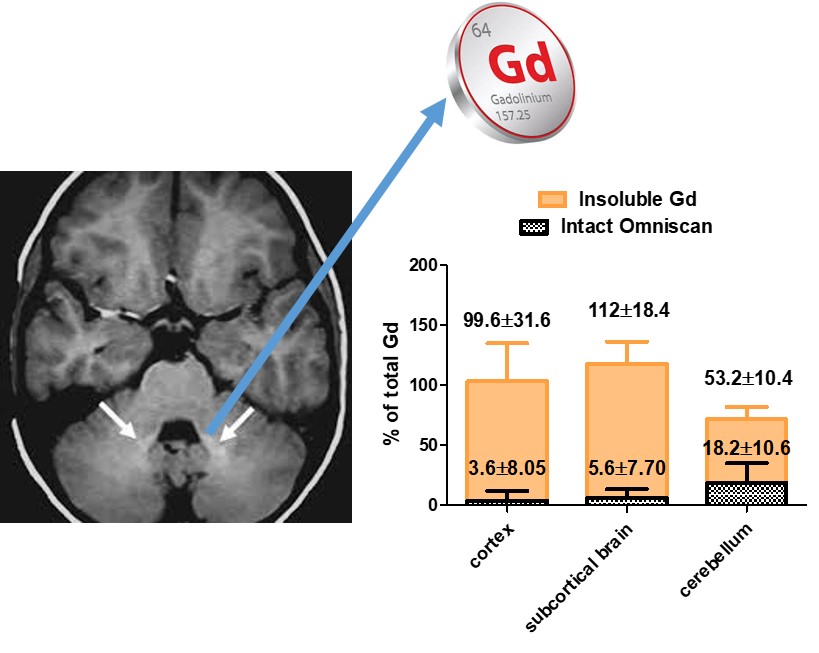Gd retention in the body
Recently, several studies have shown increased signal intensity on unenhanced T1-weighted MR images in some brain regions in patients with normal renal function who had previously received multiple doses of GBCAs. The observed hyperintense signal has been associated with the retention of small amounts of gadolinium in the brain. There has been evidence that both linear and macrocyclic GBCAs can yield detectable gadolinium traces in the brain, with linear neutral agents leaving greater quantities.

